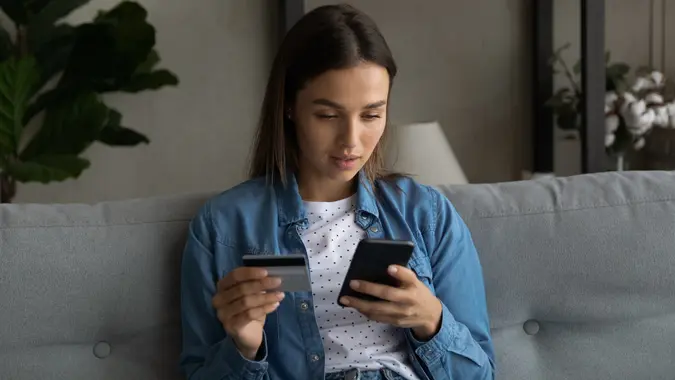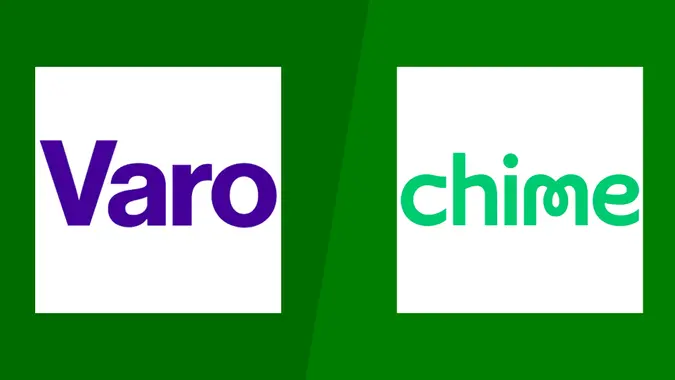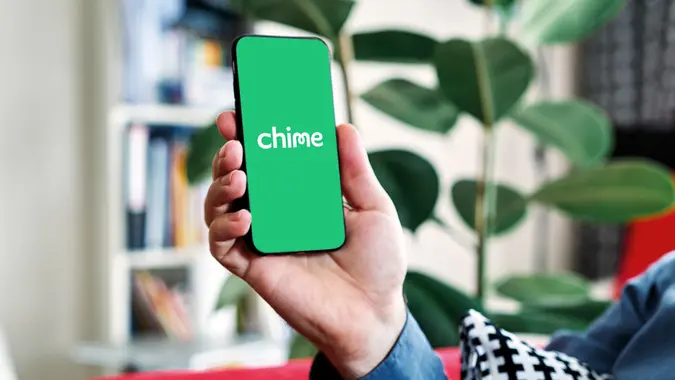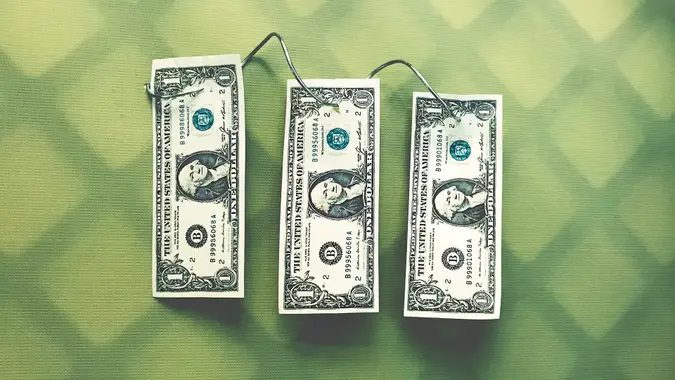I’m a Bank Teller: 3 Tools the Middle-Class Can Use To Budget and Save More Money

Commitment to Our Readers
GOBankingRates' editorial team is committed to bringing you unbiased reviews and information. We use data-driven methodologies to evaluate financial products and services - our reviews and ratings are not influenced by advertisers. You can read more about our editorial guidelines and our products and services review methodology.

20 Years
Helping You Live Richer

Reviewed
by Experts

Trusted by
Millions of Readers
While America’s vast middle class isn’t wealthy, its millions of households enjoy a level of financial security that is the envy of those struggling with poverty.
But fortunes can change. A few wrong moves with spending, saving, credit and debt could plunge a middle-class household into financial instability — but the right moves could put them on the path to being rich.
The good news is that there are tools that can prevent them from suffering the first fate and help them work toward the second. Many of those tools are free, and some might be available through the same bank where they already keep their money.
Arielle Torres, the assistant branch manager at Addition Financial Credit Union in Lake Mary, Florida, outlined her favorite tools to help middle-income earners grow their savings, reduce their spending, improve their credit, avoid fraud and become better managers of their hard-earned money.
Your Bank’s Mobile App
If you have a bank account, you might already have access to most of the tools you need to budget your income, spend according to a plan and save toward your goals. It’s up to you to take advantage of them.
“Utilize online banking to its full potential,” advised Torres. “For example, Addition Financial Credit Union offers a tool through online banking that will track how much money you spend on food and gas, etc.”
Torres cited her institution’s in-house spending and budgeting tool because that’s the one she’s familiar with, but Addition is hardly alone in offering customizable apps that their customers can use to organize and optimize their money.
The following are just a few examples of the many banks with their own internal budgeting and saving tools built right into their apps:
- Wells Fargo: The Wells Fargo My Money Map app offers spending reports, budget monitoring, a savings planner and other resources.
- Bank of America: The BoA app has built-in tools with interactive charts for different spending categories and budgeting for long-term goals.
- Chase: The bank’s mobile app has a budgeting tab that lets you track your spending, create new budgets, set savings goals, create category-based spending limits and link external accounts for a complete financial overview.
- Ally: The online-only bank lets you create up to 30 spending and saving buckets to set limits on your spending in specific categories and work toward goals like saving for a down payment or a vacation.
- Capital One: This big bank’s money-management tools let you monitor upcoming charges from subscriptions and bills, block or unblock recurring charges, create “virtual cards” for easy and secure online shopping, monitor your credit and more.
- SoFi: The all-in-one online banking platform can cover all your financial needs, from savings and checking to life insurance and investing. It also offers sophisticated budgeting and savings tools to help you optimize your finances and reach your goals. Its suite of budgeting tools, SoFi Relay, lets you connect all your accounts, monitor your credit, craft budgets, review your spending and create savings “vaults,” which are pretty much the same as buckets.
Third-Party Budgeting, Spending and Saving Apps
If your bank doesn’t offer tools for budgeting and saving, or if it doesn’t offer the tools you want, there are plenty of third-party apps to help middle-class families.
Among the most popular, comprehensive and user-friendly free options was Mint, which closed in March. Here are some other free alternatives to consider:
- Credit Karma: Mint users were redirected to Credit Karma, which is also owned by Intuit and offers much, but not all of Mint’s functionality. If your money is between homes, the platform offers free checking and savings accounts. If not, you can still use the site’s many budgeting, bucketing, saving and spending tools and trackers.
- SoFi Insights: Like Credit Karma, SoFi offers bank accounts, but you don’t have to open one to use its aforementioned Relay budgeting and expense-tracking tools.
- Goodbudget: This budgeting tool has updated the old-school envelope system for the digital age.
Your Bank’s Auto-Save Feature
Apps can help you budget your income, track your expenses, identify spending categories that you can cut back on and divide your savings into goal-based buckets, but the most important thing every middle-class earner can do to start saving is to just start. And saving is always easier on autopilot, whether it’s for an emergency fund or a retirement nest egg.
“A great way to save money is to automatically have a percentage of your payroll deducted to go directly into a savings account,” said Torres. “Taking advantage of 401(k) plans or IRA plans can help you save long term.”
 Written by
Written by  Edited by
Edited by 

























